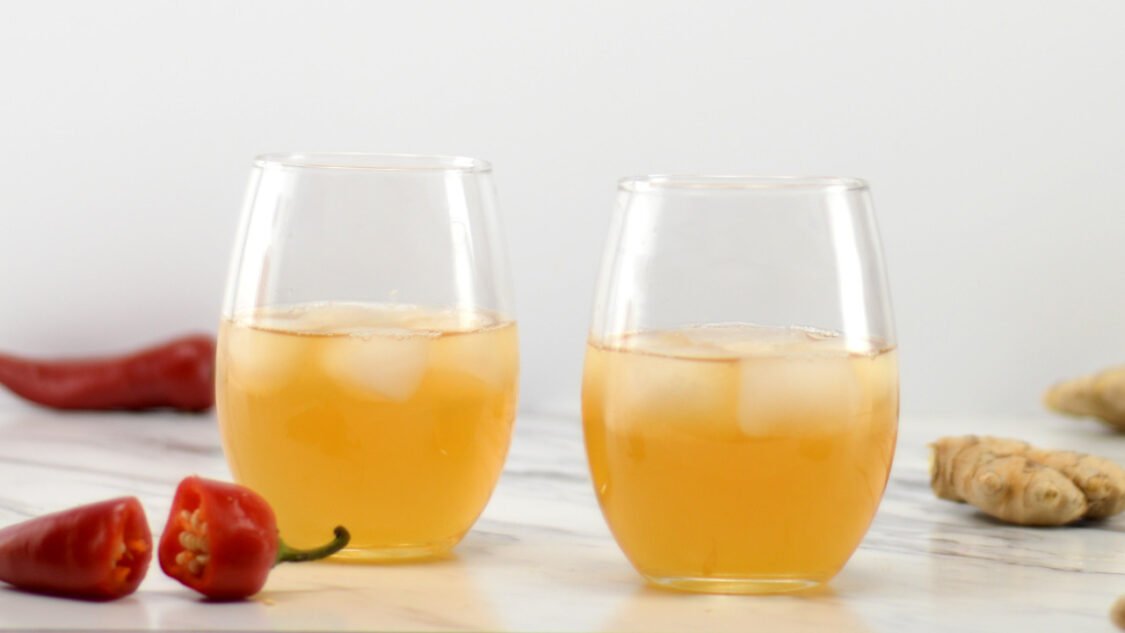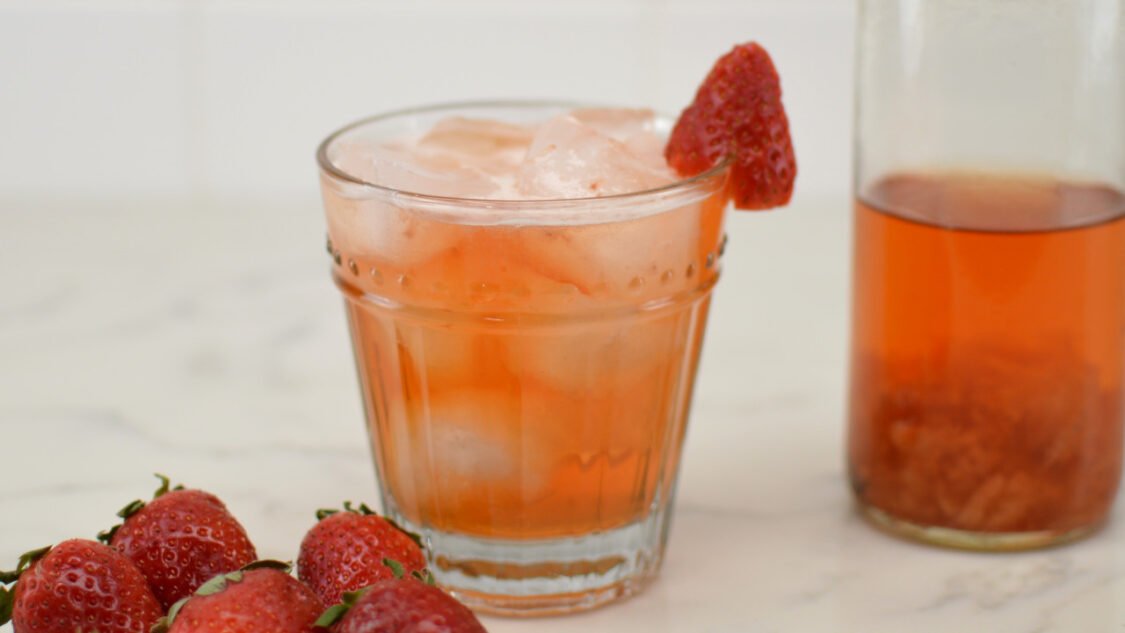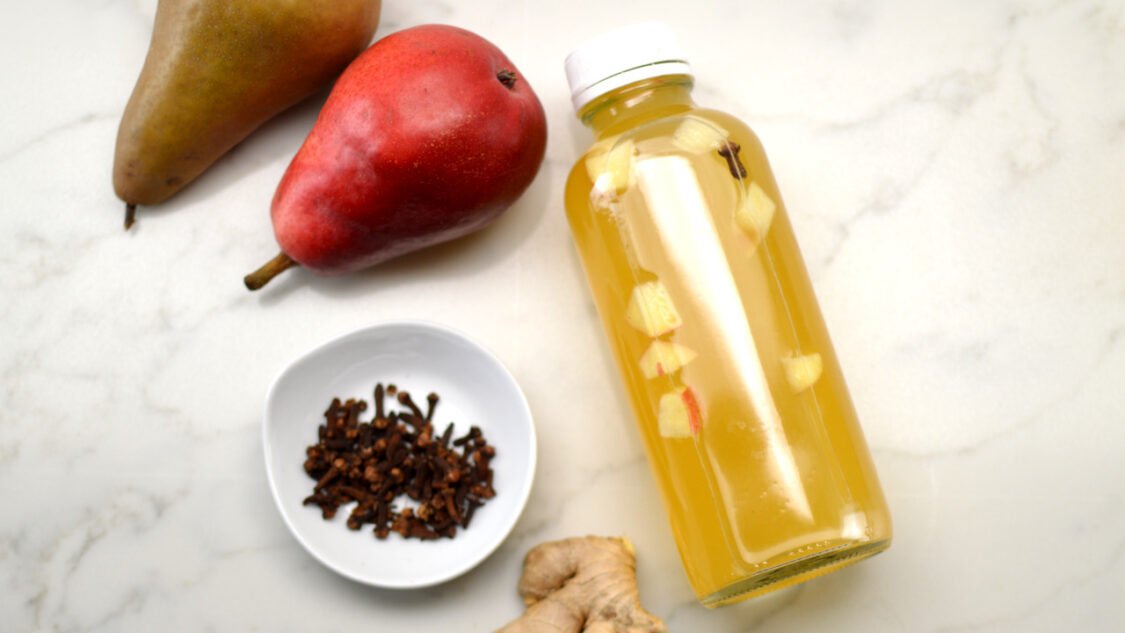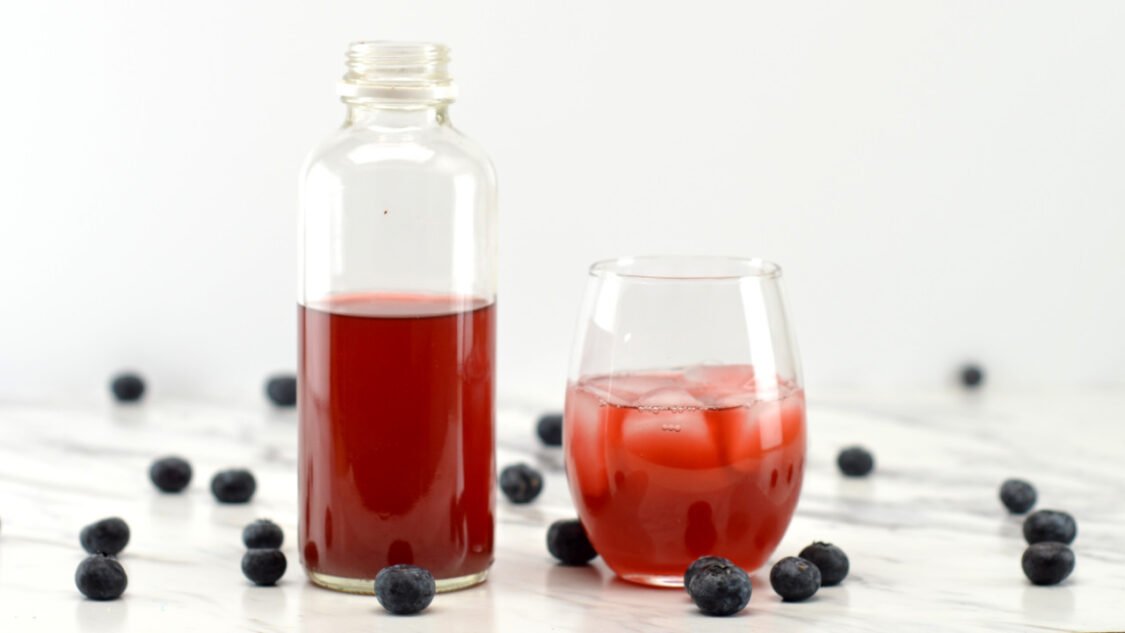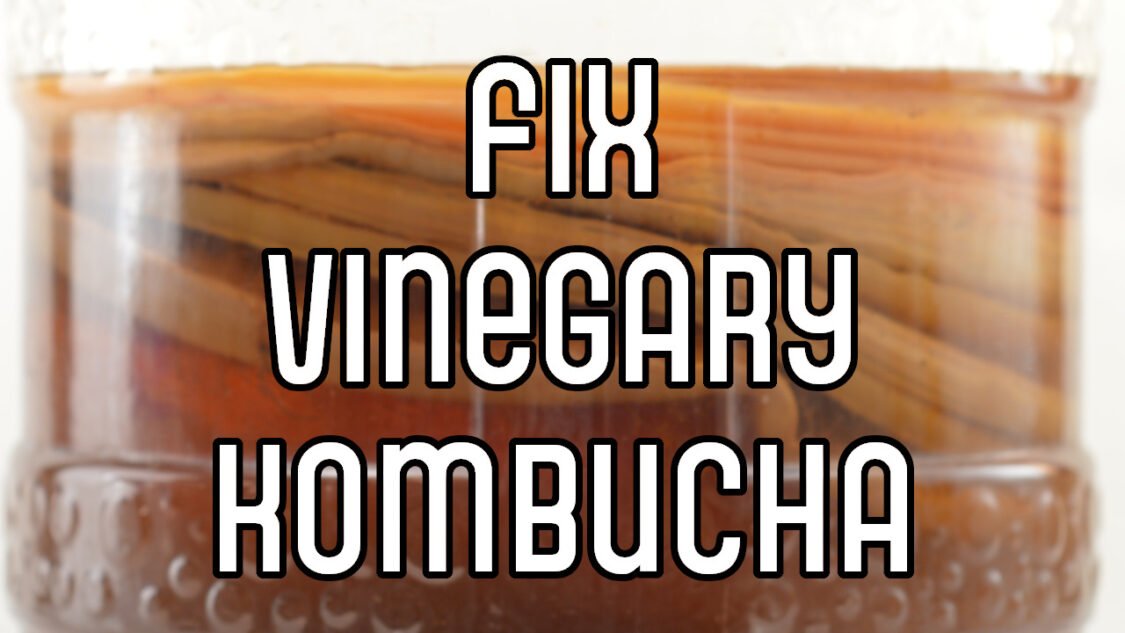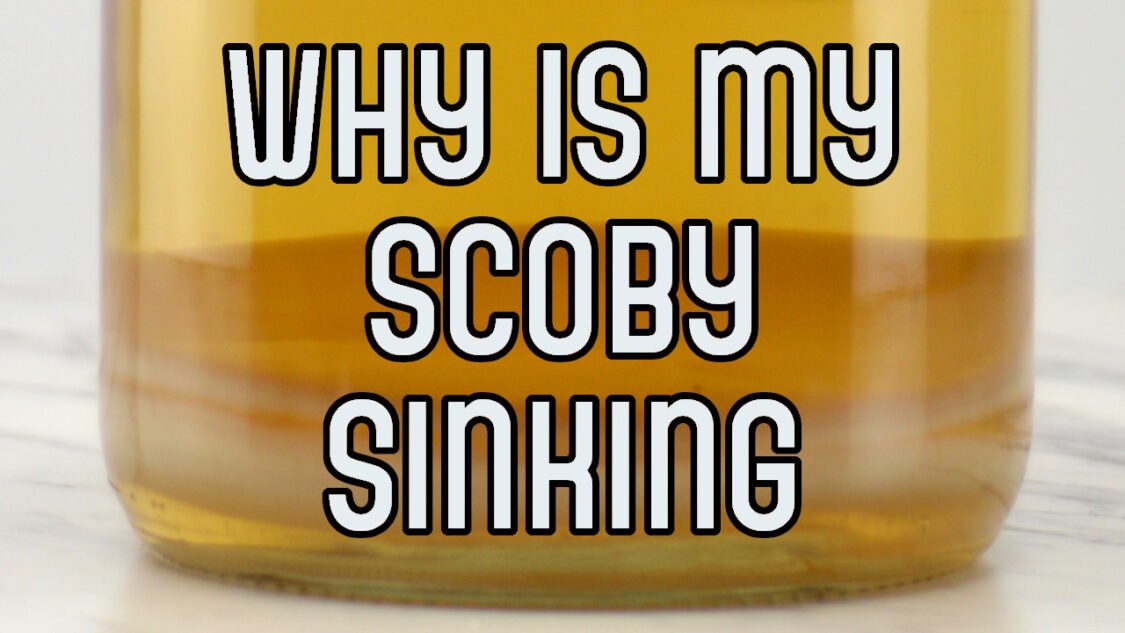Mango Habanero Kombucha

What could be better than juicy mango kombucha? How about kicking it up a notch with a a dash of habanero heat at the end of each sip to transform it into mango habanero kombucha?
A little habanero gives this recipe just enough heat, without dominating the kombucha or making it hot. There is a hint of the heat when you take followed by a small tingle of heat at the back of the throat on each swallow. It takes the sweet and slightly tart taste with flavors of ripe juicy mango bursting from the glass and adds just a touch of heat to get you coming back for more!
Drink it from the bottle with ice or use it to make a Mango Habanero Kombucha Margarita Mocktail.
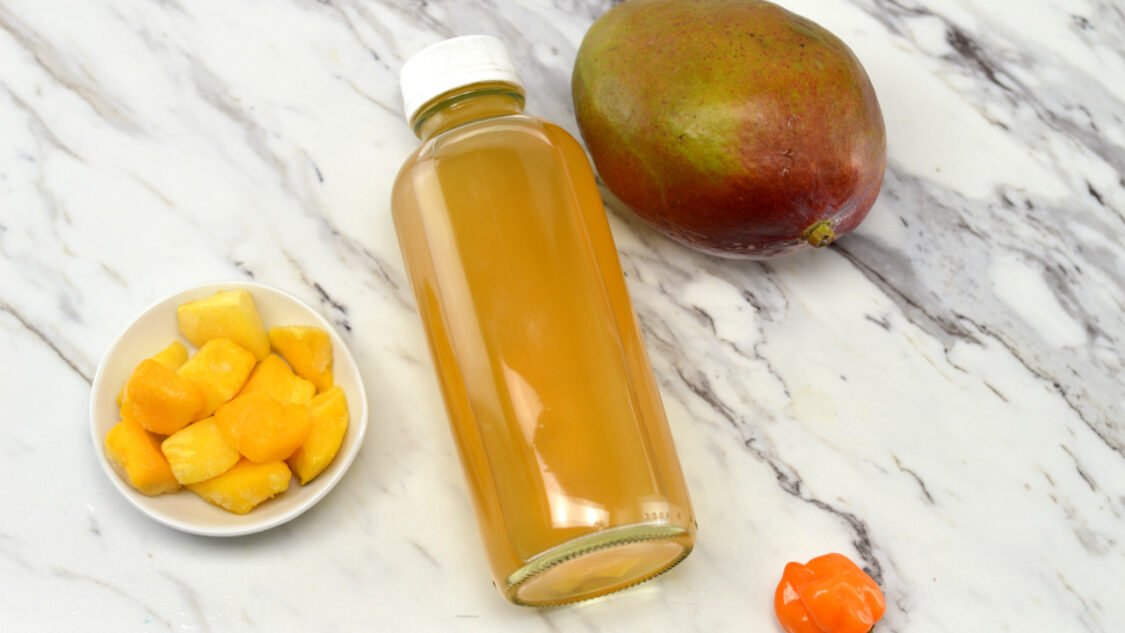
Kombucha Fermentation Overview
There are two fermentation phases when making kombucha:
1. Primary Fermentation: This is when you transform sweet tea into tart and tasty kombucha (see my guide to homemade kombucha here).
2. Secondary Fermentation: This is when you carbonate the kombucha by adding flavor and sugars (like mango ? and habanero ?) and bottling it.
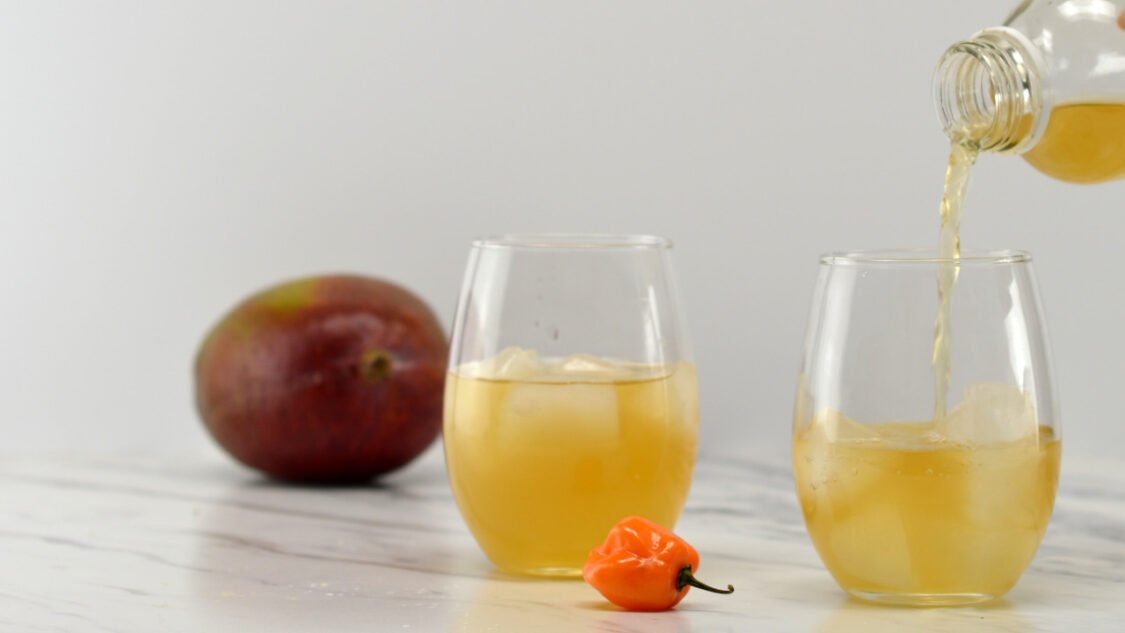
Preparing for Secondary Fermentation
This recipe makes about 7 x 16 fluid ounce bottles of finished kombucha (from a 1-gallon batch of unflavored homemade kombucha aka from your primary fermentation).
Reserve 2 cups (about 16 oz / 0.47L) kombucha and your SCOBY from your completed primary fermentation and set aside – you will use this as your starter for your next gallon batch of kombucha.
With your kombucha starter tea and SCOBY placed aside, you now have enough kombucha left to flavor and fill your bottles. This guide assumes are using 16 oz. glass bottles which are a popular choice for kombucha; however, there are many options for bottling kombucha.
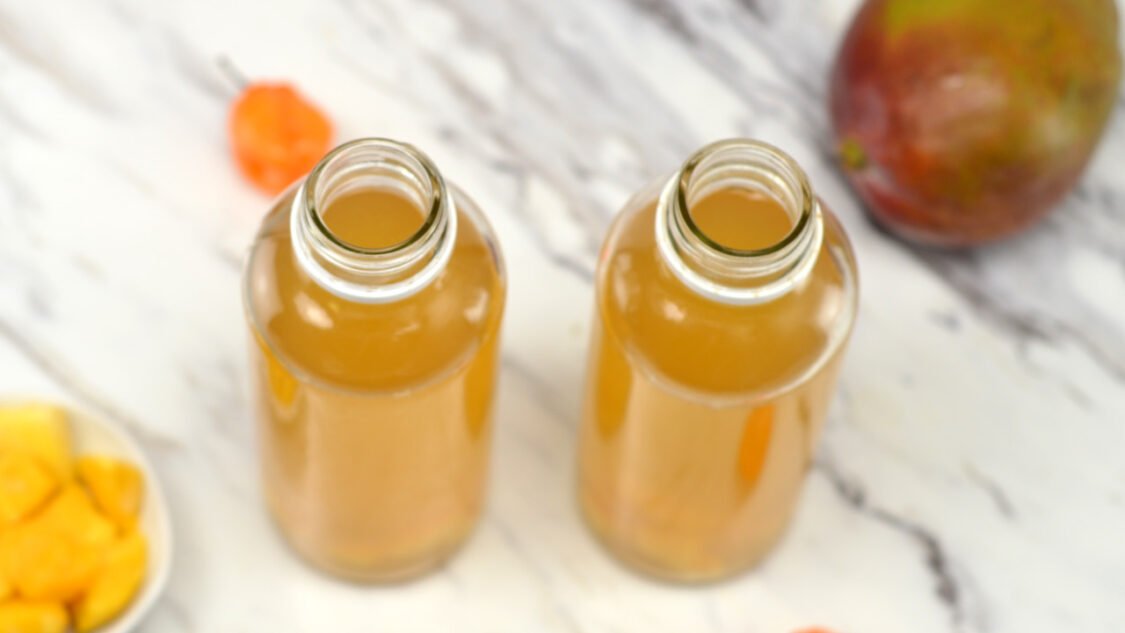
Ingredients to make Mango Habanero Kombucha
Kombucha Finished kombucha from your first fermentation is the base to which you will add the sweet mango and spicey habanero flavors
Mango: Ripe fresh mangos have sweet, citrus, and almost melon flavors all in one. The aroma of mangos is reminiscent of tropical fruits like papaya and pineapple with floral notes. Fresh or frozen mango works great. Here I used bite sized cubes of frozen mango since it was convenient.
Habanero Pepper: Habanero peppers are very hot chili peppers that are loved by people who enjoy spicy food. Habaneros are one of the most common chili peppers and add bright heat to food and drinks without burning ones taste buds. The flavor of Habaneros are fruity, floral, sweet pungent. Peppers with a similar amount of heat and flavor are the Fatalii and Scotch Bonnet
Sugar: A touch of additional sugar for bacteria and yeast to feed on which creates carbonation–extra fizzy goodness. When filling 16 ounce bottles I’ve found a sugar cube has the right amount of sugar (1 tsp) for carbonation and is a convenient way to add the right amount without the mess.
How to make Mango Habanero Kombucha
Add Flavors: Chop the mango and habanero and add to the bottles.
Bottle: Transfer kombucha to fermentation bottles.
Condition: For 3 to 10 days, until it reaches the carbonation level you like.
Enjoy: Chill in the fridge before serving.
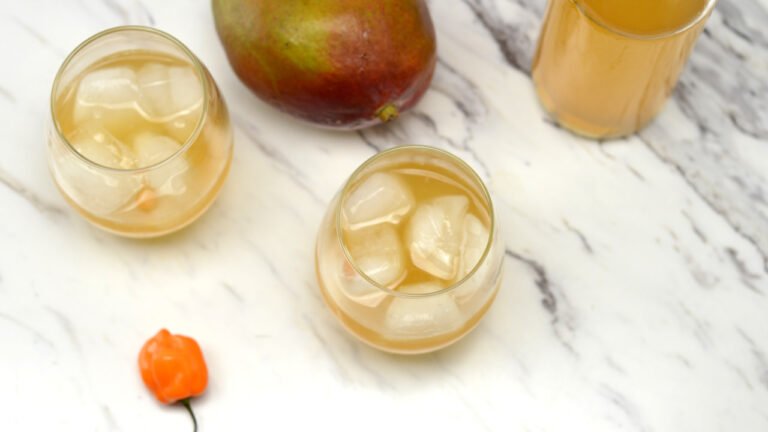
Mango Habanero Kombucha Recipe
Yield: 7 bottles • Active time: 20 minutes • Total time: 3 -10 days
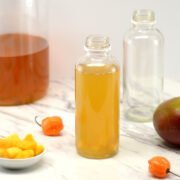
This recipe assumes you are doing a secondary fermentation (flavoring and carbonation) in the bottle. You may also incorporate a third fermentation using the same proportions but following the third fermentation steps.
Ingredients:
1 gallon homemade kombucha from a first fermentation, 1.9 L
1 ripe mango (peeled and seeded) or frozen (thaw first), finely diced, 150 g
1 habanero pepper, seeded and coarsely chopped, 15 g
7 sugar cubes or 2 Tbs white sugar 12 g
Instructions:
Warning: Wear latex or rubber gloves when handling habanero chilies. The oils will remain on your hands and can later cause burning if you touch your eyes, mouth or nose.
Prepare fruit: Peel and finely chop about 1 cup of fresh mango. If using frozen, roughly chop pieces into small chunks to allow more area for the fruit flavors to infuse into your kombucha.
Prepare habanero: Remove stem from pepper and slice pepper in half from top to bottom and remove seeds (compost them). Coarsely chop habanero and combine with chopped mango.
Flavor: Evenly divide mango habanero mixture between the bottles
Sweeten: Add one sugar cube per 16 bottle or evenly divide sugar between bottles (about 1 tsp per 16 0z bottle)
Fill bottles: Transfer kombucha into fermentation bottles, leaving about 1 inch empty at the top.
Cap: Cap the filled bottles and tighten the cap snugly.
Ferment: Place in a dark, room temperature area for 3 to 10 days, until it reaches the carbonation level you like. This process will go faster in warmer climates, and slower in cooler climates.
Enjoy: Chill your mango dragon fruit kombucha bottles in the fridge before serving and strain the kombucha to remove fruit pieces when serving (optional).
Homemade Kombucha can be stored in the fridge, tightly sealed, for several weeks.
Tips & Tricks:
Make sweet tea for your next batch the night before you flavor and bottling and let it cool on the stove overnight so that you can flavor your kombucha and get your next batch started at the same time.
If this is your first time brewing, it may be helpful to use a plastic water bottle as a gauge. Fill a recyclable plastic bottle with kombucha (leaving 1.5 inches empty at the top). When this bottle becomes rock hard, you’ll know the glass bottles are also ready. This will help you gauge how long it take for kombucha to carbonate your climate and will prevent bottle explosions.
Nutrition Information:
Kombucha Recipes You Might Also Like
Helping you learn to brew kombucha, find inspiration for new kombucha flavors and use kombucha to make kombucha mocktails

